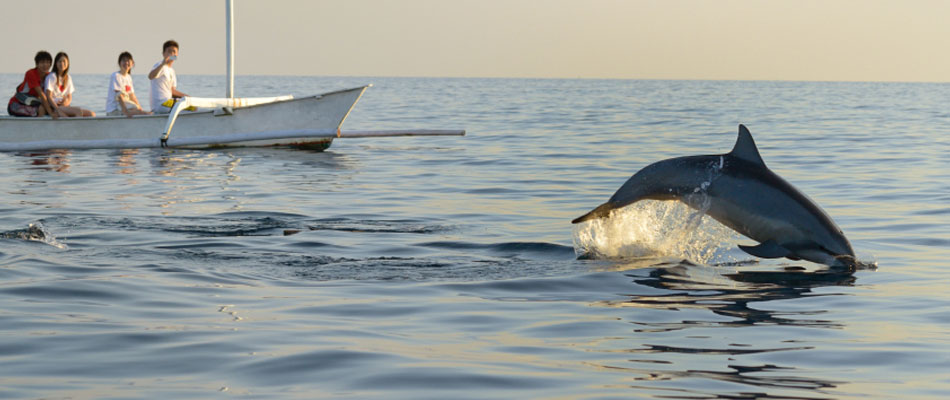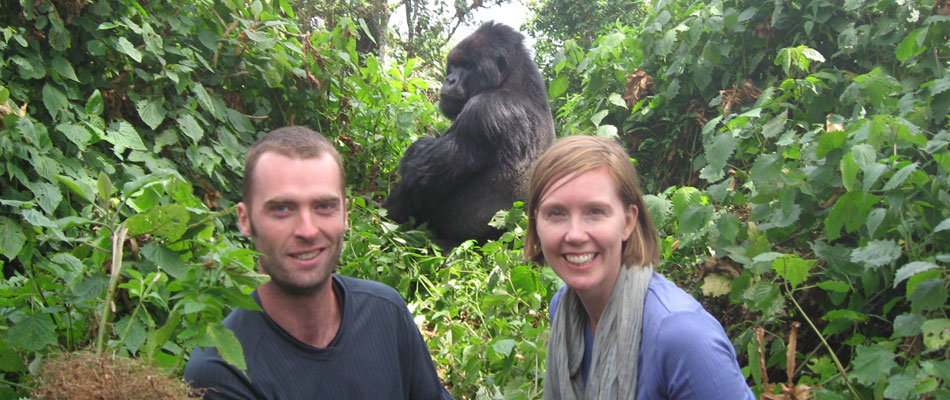Our stance on wildlife tourism issues
Wildlife watching is a highlight of many vacations – from the plains of East Africa to the jungles of South America. Responsible wildlife vacations use expert guides, who ensure you don’t just see an animal – you learn about it, and understand its behaviour and the issues involved in its conservation. Many of our partners also donate a percentage of the cost of each tour to supporting local wildlife charities or research efforts – in an attempt to conserve the very thing you are traveling there to see.
But when wildlife tourism is bad, it can be awful. Wildlife is wild – so feeding, touching and any altering of natural behaviour should never take place. Such as whale watching boats getting between mothers and their calves, or guides poking animals with sticks in order to prompt movement and help their guests get better photos.
Read more about our stance on various wildlife watching issues in the links below, or visit our page on issues affecting captive animals, including elephant trekking, here.
Read more about our views:

We often have the notion that across Africa, wildlife lives safely within the boundaries of the national parks – but this is far from the truth. Firstly, in many countries – including Namibia – more animals live outside of the protected areas than inside them. Secondly, many national parks and reserves actually run at a loss and require subsidising, which is not surprising when you consider the enormous areas they cover, and the incredible costs of maintaining the land and infrastructure, plus monitoring and staffing them. One example is Tanzania’s Selous Game Reserve. Larger than Switzerland, its porous borders leave it open to poaching (two thirds of its elephants have reportedly been killed for their tusks in recent years) – and as ironic as it may seem, a shocking 90 percent of its land is set aside for hunting, in an attempt to bring in the much-needed income and surveillance to protect this huge landscape.
At Responsible Travel, we do not want hunting to be the solution to wildlife conservation, and always believe that an animal is ultimately worth more alive than dead – which is why we do not promote trophy hunting. We believe responsible tourism can be a sustainable alternative, providing income, incentives to preserve animals and a greater respect for them than tourism. But while poaching and habitat loss continue to pose such great threats to Africa’s remaining wildlife, we tolerate hunting as a short-term solution to the problem – and continue to promote alternatives in the meantime.
Read more about responsible orangutan vacations in our guide.
Read more about the gorilla rules in our guide to gorilla safaris – as well as the importance of involving local communities, some of whom were displaced when the parks were created.
One of the biggest factors that will determine the future of sea turtles is giving them the space they need to survive. We need to preserve the beaches they lay eggs on, restrict beachfront developments and disorientating lights and music at night, and reduce plastic pollution on land and at sea. As exciting as it is to watch momma turtles coming up onto the beach at night to lay their eggs, or to see their babies hatch a few months later, educating local businesses and members of the public remains a vital part of any volunteer’s role.
Read more in our turtle conservation travel guide
In 2019 we took the decision to stop offering elephant trekking, and in 2023, after consultation with a range of NGOs, sanctuaries, and our partners, we decided to stop offering any vacations that included bathing experiences too.
We accept that when it comes to elephant sanctuaries, compromises need to be made. These huge animals cost so much to look after, and they can live for decades. And there are sadly so many that need help. Which is why we continue to recommend visits to sanctuaries where perhaps there is still room for improvement. These places also do a lot of good for elephants and depend on income from tourism. Our hope however is that eventually ‘no touch, observation-only’ sanctuaries where elephants are left to behave naturally with their own kind, with as few interactions with humans as possible, will become the norm.
Read more in our guide to elephant conservation

Read more in our tiger safaris guide.
But even Antarctica is not immune to climate change; its melting ice is an indicator on an epic scale of the threats that our planet faces in the years to come. Additionally, while tourism is well controlled, growing numbers of tourists cannot fail to make an impact on this former wilderness. How, then, can the long-haul flights and vacations to this far-flung region be justified? And what kind of effect is it having upon Antarctica’s fragile wildlife and ecosystems? Read our travel guide to Antarctica to find out more.

But when wildlife tourism is bad, it can be awful. Wildlife is wild – so feeding, touching and any altering of natural behaviour should never take place. Such as whale watching boats getting between mothers and their calves, or guides poking animals with sticks in order to prompt movement and help their guests get better photos.
Read more about our stance on various wildlife watching issues in the links below, or visit our page on issues affecting captive animals, including elephant trekking, here.
Wild dolphins & whales
Swimming with dolphins and whales is one of the ultimate bucket list experiences for many travelers. At Responsible Travel, we do not support the keeping of cetaceans in captivity, and we only promote responsible tour operators who abide by the regulations for both viewing and swimming with wild dolphins and whales. Many of our trips also have a greater conservation benefit – as travelers can contribute to research efforts and monitor behaviour.Read more about our views:
- Whale watching
- Watching and swimming with dolphins
- Our campaign against keeping orcas in captivity
- Shark cage diving

Hunting
Trophy hunting is one of the most complex ethical issues when it comes to wildlife tourism. Animal lovers are naturally repulsed by the concept of hunting lions and elephants – especially when many of the species are threatened or endangered – and killing seems like the complete antithesis to conservation. However, controlled hunting can bring in millions of pounds per year to some of the world’s poorest regions, and – crucially – it can secure vast tracts of land for wildlife that may otherwise be used for agriculture, livestock or other forms of development.We often have the notion that across Africa, wildlife lives safely within the boundaries of the national parks – but this is far from the truth. Firstly, in many countries – including Namibia – more animals live outside of the protected areas than inside them. Secondly, many national parks and reserves actually run at a loss and require subsidising, which is not surprising when you consider the enormous areas they cover, and the incredible costs of maintaining the land and infrastructure, plus monitoring and staffing them. One example is Tanzania’s Selous Game Reserve. Larger than Switzerland, its porous borders leave it open to poaching (two thirds of its elephants have reportedly been killed for their tusks in recent years) – and as ironic as it may seem, a shocking 90 percent of its land is set aside for hunting, in an attempt to bring in the much-needed income and surveillance to protect this huge landscape.
At Responsible Travel, we do not want hunting to be the solution to wildlife conservation, and always believe that an animal is ultimately worth more alive than dead – which is why we do not promote trophy hunting. We believe responsible tourism can be a sustainable alternative, providing income, incentives to preserve animals and a greater respect for them than tourism. But while poaching and habitat loss continue to pose such great threats to Africa’s remaining wildlife, we tolerate hunting as a short-term solution to the problem – and continue to promote alternatives in the meantime.
- Read more about our stance on hunting in our safari vacations guide.
- One thing we do not support at all is canned hunting. Find out more here.
Orangutans
The orangutan is one of the world’s most endangered species, highly threatened by the rampant deforestation taking place across Borneo and Sumatra – the only two islands which it inhabits. Orangutan tours support conservation by enabling the creation and protection of reserves, supporting local communities who act as the custodians of the forests and fund tree planting initiatives. There are also a number of sanctuaries in Sabah and Sarawak (Malaysian Borneo) which rescue and rehabilitate injured, orphaned or displaced orangutans – visiting these greatly contributes to orangutan conservation and research. Read more about responsible orangutan vacations in our guide.
Gorilla tracking
The creation of national parks and introduction of strictly controlled gorilla tourism has been a success story for the mountain gorilla. Numbers are now up to over 800 individuals across the mountains that span the borders of Uganda, Rwanda and the Democratic Republic of Congo, and high fees from gorilla tracking have been reinvested into their protection. Rules are enforced for tourists tracking gorillas to prevent disturbance to the animals and avoid disease transmission. Visits last a maximum of one hour, no more than eight people per day can visit each gorilla family and you must stand at least 7m away from them at all time. Read more about the gorilla rules in our guide to gorilla safaris – as well as the importance of involving local communities, some of whom were displaced when the parks were created.
Sea turtles
Sea turtles face many threats, from poaching of their eggs to the destruction of the beaches they depend on for nesting. Sea turtle volunteering vacations often focus on keeping the nests safe and ensuring as many hatchlings as possible make it to the sea where, hopefully, a small handful of them will make it to adulthood. Happily, these vacations often take place in some beautiful locations such as Kefalonia, Costa Rica and the Maldives – turtles have very good taste!One of the biggest factors that will determine the future of sea turtles is giving them the space they need to survive. We need to preserve the beaches they lay eggs on, restrict beachfront developments and disorientating lights and music at night, and reduce plastic pollution on land and at sea. As exciting as it is to watch momma turtles coming up onto the beach at night to lay their eggs, or to see their babies hatch a few months later, educating local businesses and members of the public remains a vital part of any volunteer’s role.
Read more in our turtle conservation travel guide
Elephant sanctuaries
There is a growing awareness among tourists that it is unethical to ride elephants, or to watch them performing unnatural behaviours such as painting with their trunks or playing football. Though of course, these activities do still go on.In 2019 we took the decision to stop offering elephant trekking, and in 2023, after consultation with a range of NGOs, sanctuaries, and our partners, we decided to stop offering any vacations that included bathing experiences too.
We accept that when it comes to elephant sanctuaries, compromises need to be made. These huge animals cost so much to look after, and they can live for decades. And there are sadly so many that need help. Which is why we continue to recommend visits to sanctuaries where perhaps there is still room for improvement. These places also do a lot of good for elephants and depend on income from tourism. Our hope however is that eventually ‘no touch, observation-only’ sanctuaries where elephants are left to behave naturally with their own kind, with as few interactions with humans as possible, will become the norm.
Read more in our guide to elephant conservation

Gorilla watching. Photo by David Bacon
Tiger safaris
With just 4,500 tigers remaining in the wild, the future of the largest of all the big cats hangs in the balance. Their body parts are in demand for traditional Chinese medicine, with tiger bones costing many thousands of pounds. Tiger safaris in India and Nepal can contribute towards conservation efforts, but only if you choose a responsibly managed one which does not harass the tigers and ensures money is reinvested into the national parks and tiger conservation. Read more in our tiger safaris guide.
Antarctica
The frozen continent is well-protected for the moment, with mining and drilling banned, no hunters and no conflict. It’s the preserve of wildlife and research scientists; a slice of heaven for nature lovers.But even Antarctica is not immune to climate change; its melting ice is an indicator on an epic scale of the threats that our planet faces in the years to come. Additionally, while tourism is well controlled, growing numbers of tourists cannot fail to make an impact on this former wilderness. How, then, can the long-haul flights and vacations to this far-flung region be justified? And what kind of effect is it having upon Antarctica’s fragile wildlife and ecosystems? Read our travel guide to Antarctica to find out more.
Further reading
- Responsible Travel’s stance on captive animals
- Avoiding souvenirs made from wildlife
- Our article on whether tourism can help conserve endangered species
- Our guide to responsible wildlife vacations
- Our guide to wildlife conservation vacations
- Our article on avoiding bushmeat and other endangered species





